When it comes to applications in the domain of embedded systems, the right processing unit should be selected by engineers as well as developers. The most common choices are usually FPGAs and microcontrollers (MCUs), both of which are indeed very powerful.
However, FPGAs and MCUs serve different purposes and have their own set of advantages and limitations. This blog will take you through those differences, making you realize when to use an FPGA and when to use a microcontroller.
It'll also guide you on which could be influencing your design or performance for projects.
In this article:
Part 1: What is a Microcontroller? Part 2: What is an FPGA? Part 3: Microcontroller vs FPGA: Key Differences Part 4: FPGA and MCU PCBA Manufacturer PCBONLINEWhat is a Microcontroller?
A microcontroller is a small computer in one integrated circuit, most typically consisting of a processor, memory, and input/output peripherals. Microcontrollers are designed for a specific job, such as controlling devices, managing simple inputs from users, or reading sensors in real-time. You can find these in various home appliances, communication devices, automobiles, etc, in embedded systems.
Key Components of a Microcontroller
1. CPU: It is the core of the microcontroller that executes the operations and instructions.
2. Memory: This is divided into RAM, where data is stored during operation, and the ROM, which stores the program code.
3. Peripherals: I/O ports, timers, ADC, communication protocols such as I2C, UART, SPI, etc.
Popular Microcontrollers
Atmel AVR (ATmega328P): This is the MCU embedded inside Arduino Uno and is ideally suited for beginners and low-power embedded projects.
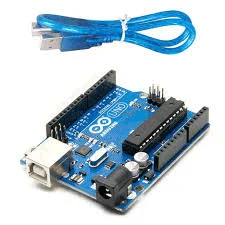
ESP32: Extremely popular microcontroller with integration of Wi-Fi and Bluetooth, making it excellent for use in IoT applications.
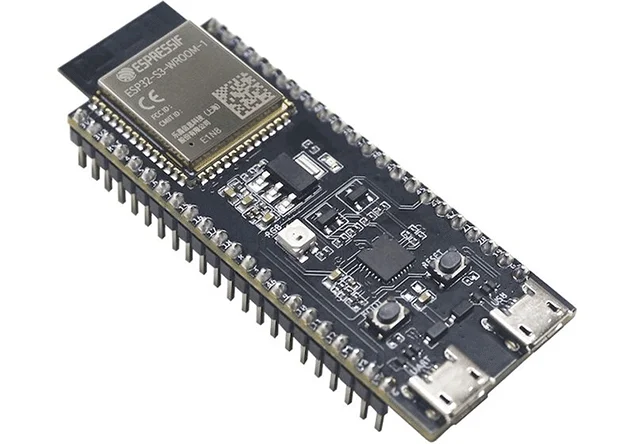
STM32F4 Series: ARM Cortex-M4-based MCUs from STMicroelectronics, high performance with many peripherals in automotive, industrial, and consumer electronics.
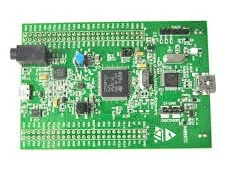
Nordic Semiconductor nRF52840: A BLE-enabled microcontroller targeted to undertake wireless communication for any IoT application.
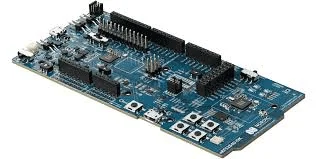
Advantages of Microcontrollers
Low cost: Usually low in price, and they are designed for low-cost applications.
Ease of use: Relatively easy to program with development environments like Arduino or STM32CubeIDE.
Low-power consumption: They are optimized for low-power consumption and therefore ideal for applications running from batteries.
Dedicated job: They can be dedicated to specific operations, for example, reading sensors or controlling motors.
Example: Smart Thermostat
For instance, in a smart thermostat, a microcontroller would control the temperature within a house by reading the data coming from a temperature sensor and comparing this with the set temperature. Then, on the basis of whether there exists a difference or not, the HVAC system is adjusted for conditioning. It can all be done by an MCU such as the ESP32 through managing sensor data, user interface, and Wi-Fi communication.
What is an FPGA?
Field Programmable Gate Arrays are integrated circuits that can be programmed after their manufacturing. It consists of programmable logic blocks aligned in a grid. These can then be combined to create custom logic circuits.
Unlike microcontrollers, whose applications are based on the execution of software, FPGAs permit the creation of hardware-level circuits that run in parallel. This gives them great power and flexibility, especially in complex applications, which require specific hardware functionality.
Important components of FPGA
1. Logic Blocks: These are very small circuits and can be programmed as regards simple logical operations such as AND, OR, and NOT, etc.
Clients and servers communicate over the CoAP protocol, which operates on the UDP transport layer.
2. Interconnects: configurable pathways that make the various logic blocks connect to form more complex circuits.
3. I/O Blocks: interfaces for communication of FPGA with external devices.
4. Clock Management: advanced features of clock management for time control at high speed.
Popularity FPGAs
Xilinx Artix-7: It is among the preferred FPGAs concerning performance, power, and cost; the FPGA is applied in communication, automotive, and industrial markets.
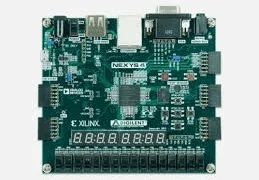
Cyclone V: It has been developed by Intel (Altera), one of the low-power and inexpensive FPGAs, which finds wide application in automotive and IoT.

Xilinx Zynq-7000: This FPGA combines programmable logic with an ARM Cortex-A9 processor hardware and software processing goes inside the same chip.
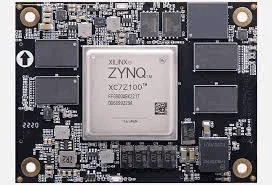
Lattice iCE40: low-power FPGA; suitable projects in mobile and handheld applications with their power and space restrictions.
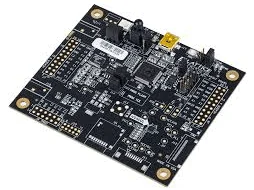
Advantages of FPGAs
Parallel Processing: several logic blocks work in parallel on different parts of the same task during a given time. Therefore, FPGAs are perfect for parallel computation.
Performance: FPGAs often outperform microcontrollers in applications such as signal processing or encoding video because execution happens on the hardware.
Flexibility: The configuration of hardware is possible wherever needed, providing more flexibility in complicated systems in FPGAs.
Example: Real-Time Video Processing
For an application that needs to process and encode video frames in real time-for example, in a drone or surveillance camera FPGA like the Xilinx Artix-7 can operate at hundreds of thousands of instructions per second. Multiplexing enables the FPGA to perform multiple pixels in parallel: this outperforms what would be possible with a microcontroller by more than enough for real-time video analysis, as opposed to what it could deliver.
Microcontroller vs FPGA: Key Differences
MCUs and FPGAs are different in their architecture, programming model, real-time processing, performance, costs, and development time.
1. Architecture
Microcontroller: A microcontroller has a fixed architecture. This means the CPU, memory, and peripherals are predefined by the manufacturers. In turn, the development process is straightforward because you know what you get, and you work within the limits provided.
FPGA: The FPGA has a programmable architecture. The hardware can be configured to perform almost any digital logic function, giving it quite a flexible nature but is also potentially a lot harder to work with. To work on such an architecture, one has to define the behavior of the logic gates and interconnections of the FPGA.
Example
Microcontroller usage scenario: In a simple robotic arm, a microcontroller can be employed to control the servos based on user input, to read sensor data, and also implement predefined sequences while using a controller such as STM32F4.
FPGA usage scenario: In a manufacturing robotic arm, an FPGA, like Intel Cyclone V, can be used to handle the high-speed control of multiple motors, so the arms would move in synchronization with themselves.
2. Programming Model
Microcontroller: Microcontrollers are programmed in high-level languages such as C/C++, or assembly. This means you write a piece of software that the CPU in the microcontroller will execute.
FPGA: FPGAs are programmed using hardware description languages, such as Verilog or VHDL. These languages describe the behavior of hardware circuits rather than writing your piece of software to run on a processor.
Example:
Microcontroller Programming: In a weather station, an MCU like ATmega328P is used to read temperature, humidity, and air pressure sensors to display data on an LCD.
FPGA Programming: For instance, in cryptography applications, it is possible to implement a custom encryption algorithm in an FPGA like Xilinx Zynq-7000 to reach significantly faster and more secure data processing in hardware.
3. Real-Time Processing
Microcontroller: The microcontrollers are efficient for the treatment of real-time tasks, but they perform them sequentially. The CPU executes instructions one after another, and in the case of highly parallel tasks, the speed might be restricted.
FPGA: FPGAs have been efficient in doing real-time parallel processing in which more than one operation can be achieved simultaneously. It is highly useful in a variety of applications such as digital signal processing, image processing, or any applications that ask for heavy computation at a high speed.
Example:
Microcontroller Real-Time Processing- A controller for a drone could be designed that uses an STM32F4 microcontroller to process, in real-time, gyroscope and accelerometer data adjusting its flight parameters.
FPGA Real-Time Processing- FPGAs are used in high-frequency trading with a Xilinx Virtex series, to execute complex financial algorithms with an extremely low latency.
4. Performance
Microcontroller: It usually depends upon the clock speed and architecture of a microcontroller. A simple sensor reading or communication protocols are generally sufficient for control applications.
FPGA: In general, FPGAs perform better than microcontrollers for signal processing, high-speed data acquisition, or cryptography.
Example:
Microcontroller Performance: A smartwatch uses an MCU, the Nordic nRF52840, to process notifications, activity tracking, and Bluetooth communication management.
FPGA Performance: A real-time image recognition system in a self-driving automobile may employ an FPGA to decode video streams from cameras and determine obstacles.
5. Cost
Microcontroller: Typically, microcontrollers are more economical, and many are available at less than $10.
FPGA: FPGAs will be more expensive, especially in higher logic gate densities, and are somewhat sophisticated.
Example:
Low-Cost Microcontroller Project: An autonomous night light using an 8-bit MCU will cost just a few dollars.
High-Expensive FPGA Project: A 5G base station may employ an expensive FPGA because of its performance and flexibility required.
6. Development Time
Microcontroller: The microcontrollers are faster to develop with, easier, and faster since there is an abundance of pre-written libraries, tutorials, and development environments.
FPGA: Programming with FPGAs takes longer, both because of the demands on more expertise in HDLs, as well as the long-running simulation and synthesis phases.
Example:
Quick MCU development: It is easy to prototype a wireless sensor network to monitor soil moisture using an MCU such as ESP32, with abundant libraries for wireless communication.
Time-consuming FPGA development: A custom video encoder using FPGA will need writing of HDL code, simulating the design, and then synthesizing the HDL code into the FPGA hardware.
FPGA and MCU PCBA Manufacturer PCBONLINE
Whether you use an FPGA or MCU as the main chip of your design/project, you will need a PCBA (printed circuit board assembly) manufacturer to turn your design into real products. PCBONLINE, a one-stop PCBA manufacturer, can provide reliable and cost-effective electronics manufacturing for your FPGA/MCU PCBA project.
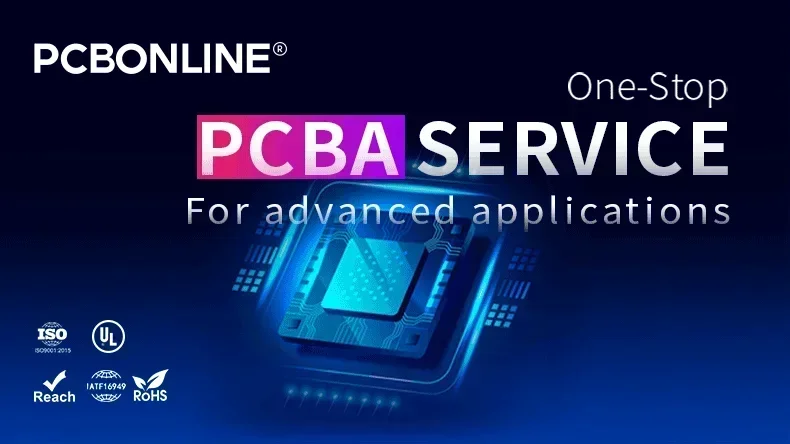
PCBONLINE is a source factory manufacturer having two large advanced PCB manufacturing bases and one PCB assembly factory and offers cost-effective manufacturing.
Provide turnkey FPGA and MCU PCBA manufacturing, including prototyping, PCB fabrication, component sourcing, PCB assembly, PCBA value-added, testing, enclosures, box-build assembly, and end-product application simulation testing.
For the success of your project, PCBONLINE offers free DFM (design for manufacturing) before and during prototyping and solves all issues in the sampling processes.
PCBONLINE can complete the R&D for your FPGA or MCU-based project or take part in your project development from the early stage.
High-quality FPGA/MCU PCBA manufacturing certified with ISO 9001:2015, ISO 14001:2015, IATF 16949:2016, RoHS, REACH, UL, and IPC-A-610 Class 2/3.
To get a quote for turnkey PCBA manufacturing for your FPGA or MCU PCBA project, contact info@pcbonline.com.
Conclusion
Microcontrollers and FPGAs have their unique advantages and cater to different types of applications. Microcontrollers are suited to simple, low-cost, and low-power applications, while FPGAs outperform in high-performance, parallel-processing applications, plus allow hardware-level customization. Ultimately, the project requirements should be well understood when deciding on one versus the other. To get professional suggestions and reliable PCBA manufacturing for your FPGA/MCU project, work with the one-stop PCBA manufacturer PCBONLINE.
PCB assembly at PCBONLINE.pdf




